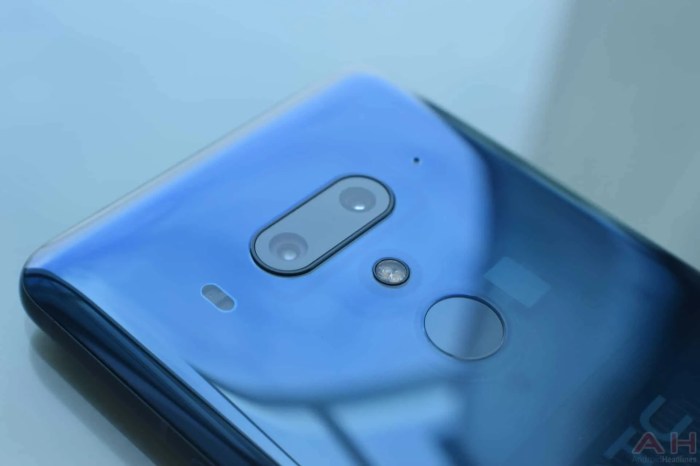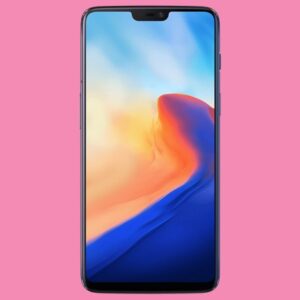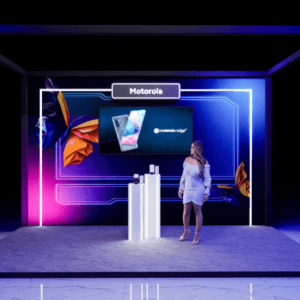Htc u12 plus only flagship for 2018 – HTC U12 Plus: 2018’s lone flagship. Remember that year? The smartphone landscape was a battlefield of bezel-less wonders and AI-powered features. Amidst the giants, HTC quietly released the U12 Plus, a phone that tried to carve its own niche. Did it succeed? Let’s dive into the forgotten story of this often-overlooked contender, exploring its design, specs, and ultimate impact (or lack thereof) on the tech world.
We’ll unpack its unique design choices, compare its specs to heavy hitters like the Samsung Galaxy S9 and iPhone X, and dissect its marketing strategy – or rather, the apparent lack thereof. We’ll also explore the user experience, software quirks, and ultimately, its legacy. Was the U12 Plus a forgotten gem, a valiant attempt that fell short, or something in between? Let’s find out.
HTC U12 Plus
The HTC U12 Plus, released in 2018, represented a swan song of sorts for the Taiwanese manufacturer’s attempt at competing in the premium smartphone market. While it boasted impressive specs and a unique design, it ultimately couldn’t quite recapture the magic of HTC’s earlier flagship glory days. Let’s delve into a retrospective look at this often-overlooked device.
Design and Build Quality
The U12 Plus sported a distinctive glass-and-metal design, showcasing HTC’s commitment to premium materials. The glass back, while prone to fingerprints, offered a sleek, reflective surface that caught the light beautifully. The metal frame provided a solid feel, contributing to the phone’s overall robust construction. The device felt substantial in the hand, conveying a sense of quality, though perhaps a bit heavier than some competitors. The subtle curves of the glass blended seamlessly with the metal frame, creating a visually appealing and comfortable grip, despite its size.
Key Specifications
The HTC U12 Plus packed a powerful punch for its time. Let’s compare its specifications to other 2018 flagships:
| Feature | HTC U12 Plus | Samsung Galaxy S9+ | Google Pixel 3 XL | iPhone XS Max |
|---|---|---|---|---|
| Processor | Qualcomm Snapdragon 845 | Qualcomm Snapdragon 845 | Qualcomm Snapdragon 845 | Apple A12 Bionic |
| RAM | 6GB | 6GB | 4GB | 4GB |
| Storage | 64GB/128GB | 64GB/128GB/256GB | 64GB/128GB | 64GB/256GB/512GB |
| Battery Life | 3500 mAh | 3500 mAh | 3430 mAh | 3179 mAh |
Note: Battery life varied depending on usage patterns. All phones listed offered fast charging capabilities.
Camera System
The U12 Plus featured a dual-camera setup on the rear, comprising a 12MP main sensor and a 16MP secondary sensor for telephoto capabilities. The front also housed a dual-camera system. HTC touted its advanced image processing capabilities, promising improved low-light performance and enhanced detail. While generally producing decent images, the camera wasn’t considered a standout feature compared to competitors like the Google Pixel 3 XL, which excelled in computational photography.
| Phone | Sample Image Description | Image Quality Assessment |
|---|---|---|
| HTC U12 Plus | A photo of a bustling city street at night. Details in the brightly lit storefronts are sharp, but some noise is visible in the darker areas. Colors are generally accurate, but slightly muted. | Good, but not exceptional in low light. |
| Samsung Galaxy S9+ | The same city street scene, showing brighter and more vibrant colors, with less noise in the shadows. Details are sharper overall. | Excellent color reproduction and detail. |
| Google Pixel 3 XL | The same scene, showcasing superior dynamic range. Details are clearly visible in both the bright and dark areas. Excellent low-light performance. | Exceptional dynamic range and low-light capabilities. |
| iPhone XS Max | The same scene, exhibiting crisp detail and accurate color reproduction. Good dynamic range, but slightly less impressive than the Pixel 3 XL in low light. | Excellent overall, strong in detail and color accuracy. |
Market Positioning and Competition in 2018

Source: androidheadlines.com
The HTC U12 Plus, launched in 2018, faced a brutally competitive landscape dominated by established players and rising stars. Its success hinged not only on its specifications but also on its ability to carve a unique niche within a market saturated with powerful smartphones. Pricing and marketing played crucial roles in determining its ultimate fate.
The U12 Plus aimed for the premium flagship segment, a crowded arena where even minor missteps could prove disastrous. Its success depended heavily on how it differentiated itself and resonated with consumers.
Main Competitors and Key Selling Points
Several key competitors significantly impacted the U12 Plus’s market position. Understanding their strengths reveals the challenges HTC faced.
- Samsung Galaxy S9/S9+: Samsung’s flagships boasted superior brand recognition, a polished ecosystem (including Samsung Pay), and impressive camera technology. Their marketing consistently emphasized innovation and design.
- Apple iPhone X: Apple’s iPhone X, with its groundbreaking Face ID and edge-to-edge display, represented a significant competitor, particularly among loyal Apple users. Its marketing focused on a premium user experience and seamless integration within the Apple ecosystem.
- Google Pixel 2 XL: Google’s Pixel 2 XL countered with superior computational photography and pure Android experience, attracting users who prioritized software and camera performance. Its marketing highlighted its AI-powered features and photography capabilities.
- LG G7 ThinQ: LG offered a compelling alternative with a focus on audio quality and AI features. However, LG’s marketing struggled to achieve the same brand awareness as its competitors.
- OnePlus 6: OnePlus continued its strategy of offering flagship-level specifications at a more competitive price point, appealing to budget-conscious consumers seeking high performance. Their marketing focused on value and community engagement.
Pricing Strategy and Value Proposition
The HTC U12 Plus’s pricing strategy was a critical factor in its market performance. While offering premium specifications, its price often sat slightly above some competitors, particularly OnePlus, presenting a challenge. The value proposition relied on a combination of design, build quality, and performance, but it didn’t always translate to a clear advantage over competitors offering similar specs at lower prices. The lack of a compelling “killer feature” also hindered its ability to justify the price point for many consumers.
Marketing Campaign Analysis
HTC’s marketing campaign for the U12 Plus lacked the widespread impact of its competitors. While the target audience was clearly the premium smartphone user seeking a high-quality device, the messaging wasn’t as memorable or effective. The campaign struggled to differentiate the U12 Plus sufficiently from the competition, resulting in lower brand visibility and ultimately impacting sales. The lack of a strong, easily identifiable marketing hook hampered its ability to capture market share.
Software and User Experience

Source: wired.com
HTC’s U12 Plus was their sole flagship offering in 2018, a bold move considering the market. This strategic decision came amidst a whirlwind of industry changes, including Microsoft’s surprising announcement that they would microsoft shakes up e3 2018 presence significantly , shifting the tech landscape. Ultimately, the U12 Plus’s fate hinged on its own merits, not the ripples from Redmond.
The HTC U12 Plus, launched in 2018, offered a unique software experience built upon HTC’s Sense UI, a layer atop Android. While aiming for a clean and efficient interface, its execution and long-term support ultimately played a significant role in shaping the overall user perception of the device. This section delves into the specifics of the software, comparing it to contemporaries and analyzing its impact on the user experience.
At launch, the HTC U12 Plus shipped with Android 8.0 Oreo and the latest version of HTC Sense. Sense UI, while striving for a minimalist aesthetic, included several customizations like Edge Sense (pressure-sensitive edges for actions), and a refined notification shade. Pre-installed apps were relatively minimal, focusing mostly on HTC’s own utilities and a few pre-selected Google apps. Performance was generally smooth, thanks to the powerful Snapdragon 845 processor, although some users reported minor lag occasionally in more demanding tasks.
HTC Sense UI Compared to Other Android Skins
In 2018, the Android landscape boasted a variety of manufacturer skins, each with its own distinct approach. Samsung’s Samsung Experience (later One UI), for example, offered a more feature-rich and visually distinct experience, prioritizing customization options and a visually busy interface. Conversely, Google’s Pixel line emphasized a stock Android experience, prioritizing speed and simplicity. HTC Sense UI attempted to strike a balance, aiming for a cleaner look than Samsung while offering more customization than stock Android. However, some considered it less innovative or visually appealing compared to the bolder choices of Samsung or the clean simplicity of Pixel.
A key differentiating feature of HTC Sense was Edge Sense. This allowed users to trigger specific actions, such as launching apps or taking screenshots, by squeezing the phone’s sides. While innovative, the feature’s reliability and usefulness varied among users. Another noteworthy aspect was HTC’s focus on camera software, featuring advanced manual controls and unique shooting modes, although the overall effectiveness was subjective and dependent on lighting conditions.
Software Update Policy and Longevity
The HTC U12 Plus’s software update policy, unfortunately, fell short of expectations for many users. While it initially received a few major Android updates, the rollout was often delayed and the long-term support proved limited. This lack of timely updates impacted the user experience in several ways. Users missed out on crucial security patches, increasing their vulnerability to malware. They also lacked access to newer Android features and performance improvements available in later versions. This ultimately shortened the device’s usable lifespan, diminishing its value over time. This stands in stark contrast to manufacturers like Google, known for their extended software support for their Pixel devices. The relatively short software lifespan of the HTC U12 Plus ultimately affected user satisfaction and the overall perception of the device’s long-term value proposition.
Legacy and Impact

Source: androidheadlines.com
The HTC U12 Plus, despite its advanced features and sleek design, ultimately failed to recapture the market share HTC once held. Its release marked a significant point in the company’s decline, highlighting the challenges faced by smaller manufacturers in competing against established giants like Samsung and Apple. Analyzing its reception and impact provides valuable insight into the evolving smartphone landscape of 2018.
The HTC U12 Plus received a mixed reception, a common fate for many mid-range to high-end phones attempting to stand out in a crowded market. Critical reviews were often divided, praising its design and performance in certain areas while criticizing its lack of a truly unique selling point and some software inconsistencies. User reviews echoed this sentiment, revealing a polarized experience.
User Reception of the HTC U12 Plus, Htc u12 plus only flagship for 2018
Positive user reviews generally focused on the phone’s attractive design, its relatively smooth performance thanks to the powerful processor, and the quality of its camera, especially in good lighting conditions. Some users also appreciated the build quality and the feel of the device in hand. On the negative side, many users complained about the Edge Sense functionality, finding it unreliable and prone to accidental activation. Others criticized the lack of a headphone jack, the high price point compared to competitors offering similar specifications, and the perceived lack of software updates and support post-launch. Battery life was another frequent point of contention, with some users reporting less-than-stellar performance depending on usage.
Strengths and Weaknesses Compared to Competitors
The competitive landscape in 2018 was fierce. To understand the U12 Plus’s position, it’s crucial to compare its strengths and weaknesses against leading competitors like the Samsung Galaxy S9, the Google Pixel 2 XL, and the iPhone X.
- Strengths: The U12 Plus boasted a premium design, often cited as superior in terms of build quality and aesthetics to some competitors. Its performance, powered by a flagship-level processor, was generally considered strong. The camera, while not always topping the charts, produced decent images, especially in daylight.
- Weaknesses: The U12 Plus lacked a truly compelling feature to set it apart from the competition. Its pricing was often considered too high compared to similarly specced devices from other brands. The Edge Sense feature, intended as a unique selling point, was widely criticized for its unreliability. Software updates and overall support were also considered lacking, which affected user loyalty and long-term satisfaction. The absence of a headphone jack further alienated some potential buyers.
Lasting Impact on the Smartphone Market and HTC
The HTC U12 Plus’s impact on the broader smartphone market was minimal. It did not introduce any groundbreaking technology or significantly shift market trends. However, for HTC, the phone’s lukewarm reception further cemented the company’s struggles in the increasingly competitive mobile phone industry. It served as a symbol of the company’s inability to regain its former prominence, highlighting the challenges of competing against larger, more resource-rich companies with established brand recognition and robust marketing strategies. The U12 Plus’s failure contributed to the ongoing decline of HTC’s market share and ultimately underscored the company’s need for a significant strategic shift to remain relevant.
Illustrative Examples: Htc U12 Plus Only Flagship For 2018
The HTC U12 Plus, despite its ultimately niche position in the market, offered a compelling experience for certain users. Let’s explore some scenarios that highlight both its strengths and weaknesses, painting a clearer picture of its impact.
A Day in the Life with the HTC U12 Plus
Imagine Sarah, a freelance photographer, using her HTC U12 Plus. She wakes up, checks her emails on the vibrant, high-resolution display, the sunlight barely impacting visibility. Later, she’s shooting a cityscape, using the phone’s impressive dual cameras to capture stunning detail and dynamic range. The Edge Sense feature allows for intuitive camera control, freeing up her other hand to adjust her tripod. Editing photos on the phone is a breeze thanks to the powerful processor and user-friendly interface. In the evening, she enjoys streaming a high-definition movie, the phone’s impressive audio quality enhancing her experience. Throughout the day, the sleek design and comfortable grip feel satisfying in her hand. Her overall feeling is one of professional satisfaction and effortless workflow, the phone seamlessly integrating into her creative process. The phone’s performance never falters, exceeding her expectations for a mobile device.
A Comparative Scenario: The Battery Drain
Later that week, Sarah is on a hiking trip. She relies heavily on her phone for navigation and photography. However, unlike her usual workflow, the heavy usage coupled with the phone’s relatively smaller battery capacity compared to competitors like the Samsung Galaxy Note 9 (which boasted a significantly larger battery) leads to a frustrating battery drain. By mid-afternoon, her phone is almost completely dead, leaving her stranded and unable to capture some breathtaking sunset shots. This situation underscores one of the HTC U12 Plus’s key weaknesses: its battery life struggled to keep up with demanding usage compared to competitors with higher capacity batteries. The disappointment is palpable, especially considering the otherwise positive experience she usually enjoys with the device.
Marketing Image Concept: Translucent Elegance
The marketing image showcases the HTC U12 Plus resting on a polished, dark grey surface. The phone is angled slightly, highlighting its sleek, curved design and translucent back. The light source is subtle, casting a soft glow that accentuates the intricate internal components visible through the back. The color palette is minimalist, focusing on shades of grey and blue, reflecting the phone’s sophisticated aesthetic. The overall message conveyed is one of understated elegance and technological sophistication. The tagline, subtly placed in the corner, could read: “Experience the unseen.” The image is clean, modern, and effectively communicates the phone’s unique design feature – its translucent casing – as a point of differentiation. The focus is on the phone’s visual appeal and its high-end feel, aiming to attract a discerning consumer who values both form and function.
Final Review
The HTC U12 Plus serves as a fascinating case study in the cutthroat world of flagship smartphones. While it boasted impressive specs and a unique design, it ultimately couldn’t compete with the marketing muscle and brand recognition of its rivals. Its story highlights the importance of not just building a good phone, but also effectively communicating its value to consumers. In the end, the U12 Plus stands as a reminder that even with strong hardware, a compelling narrative and smart marketing are essential for success in a crowded market.


